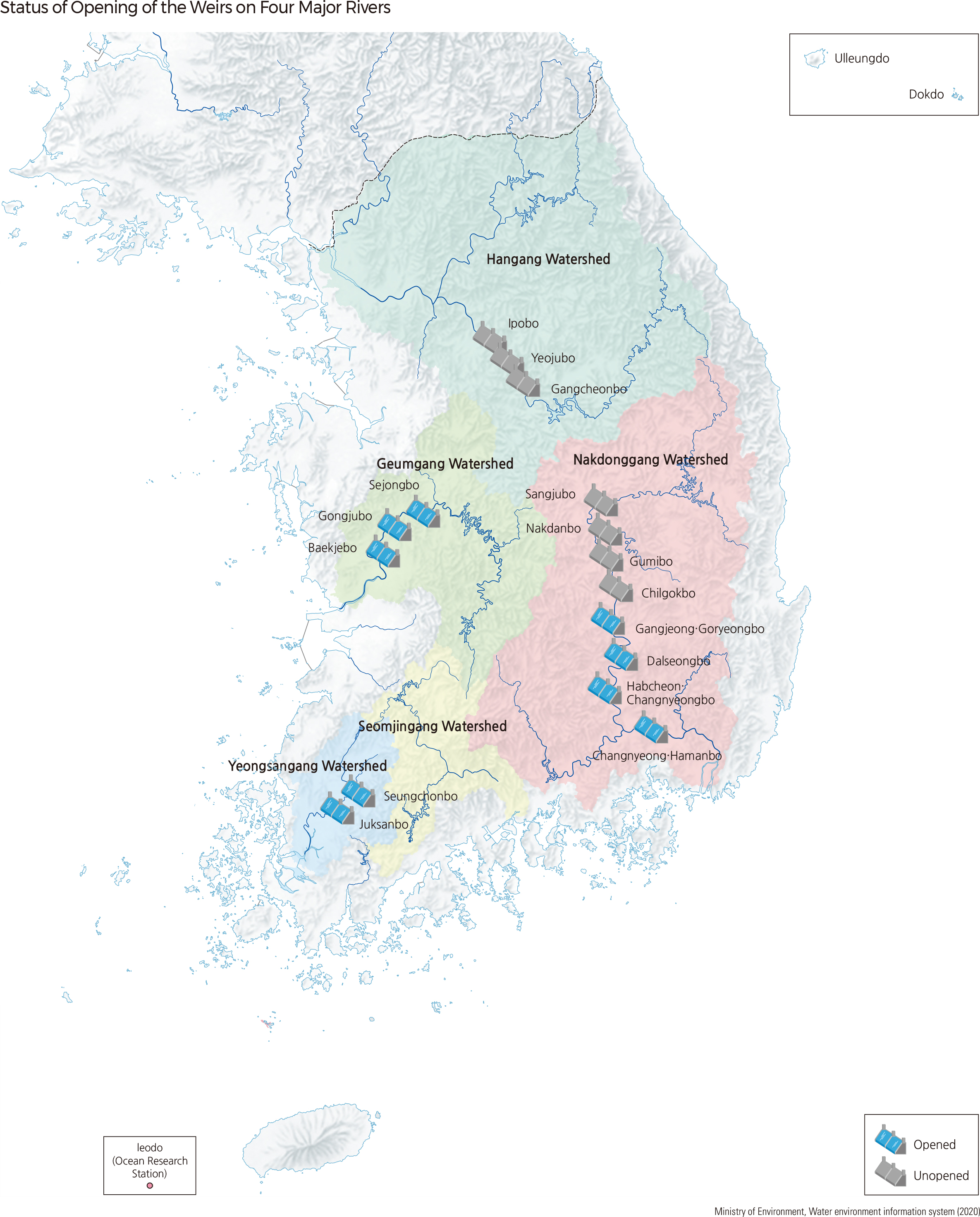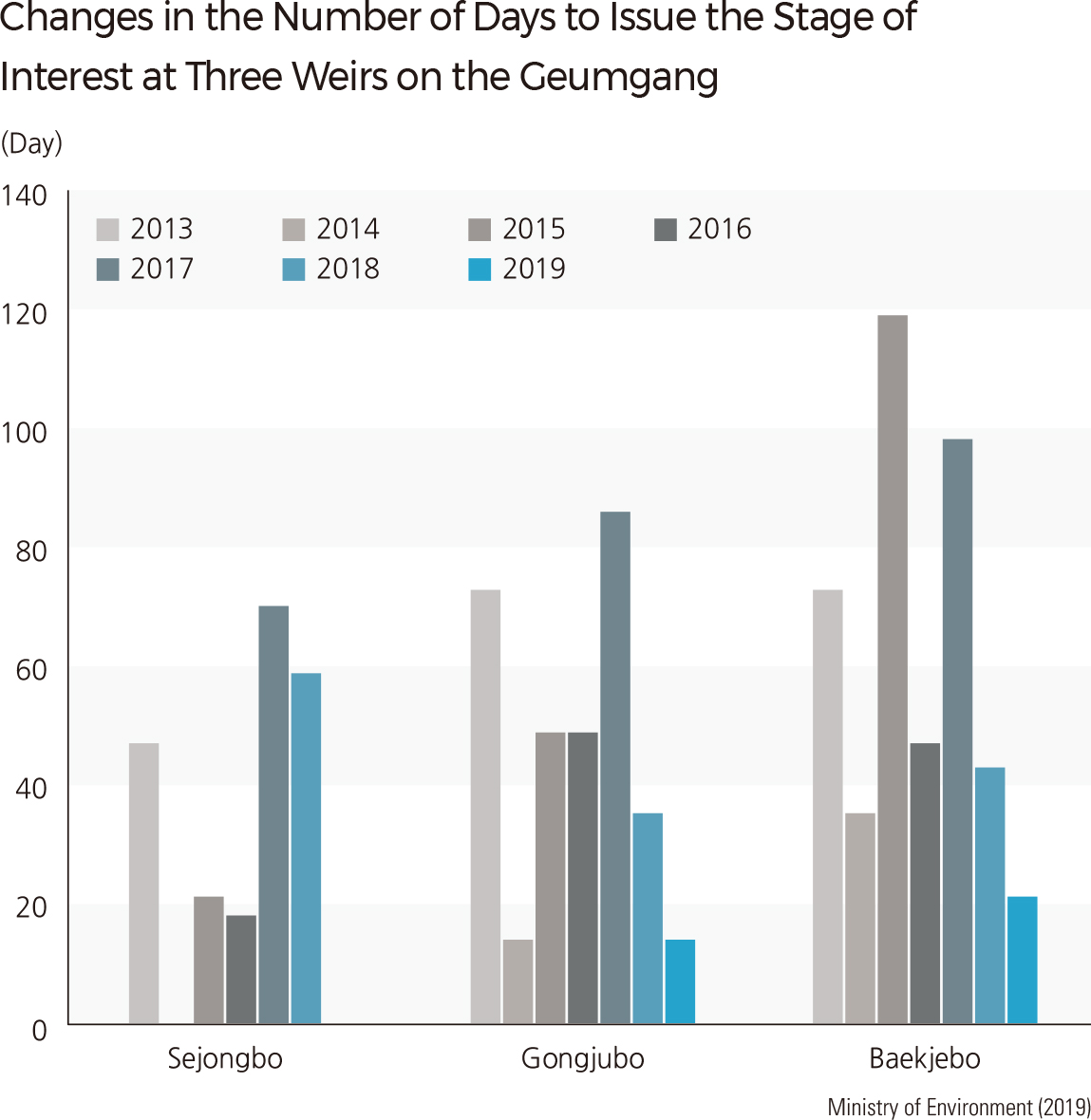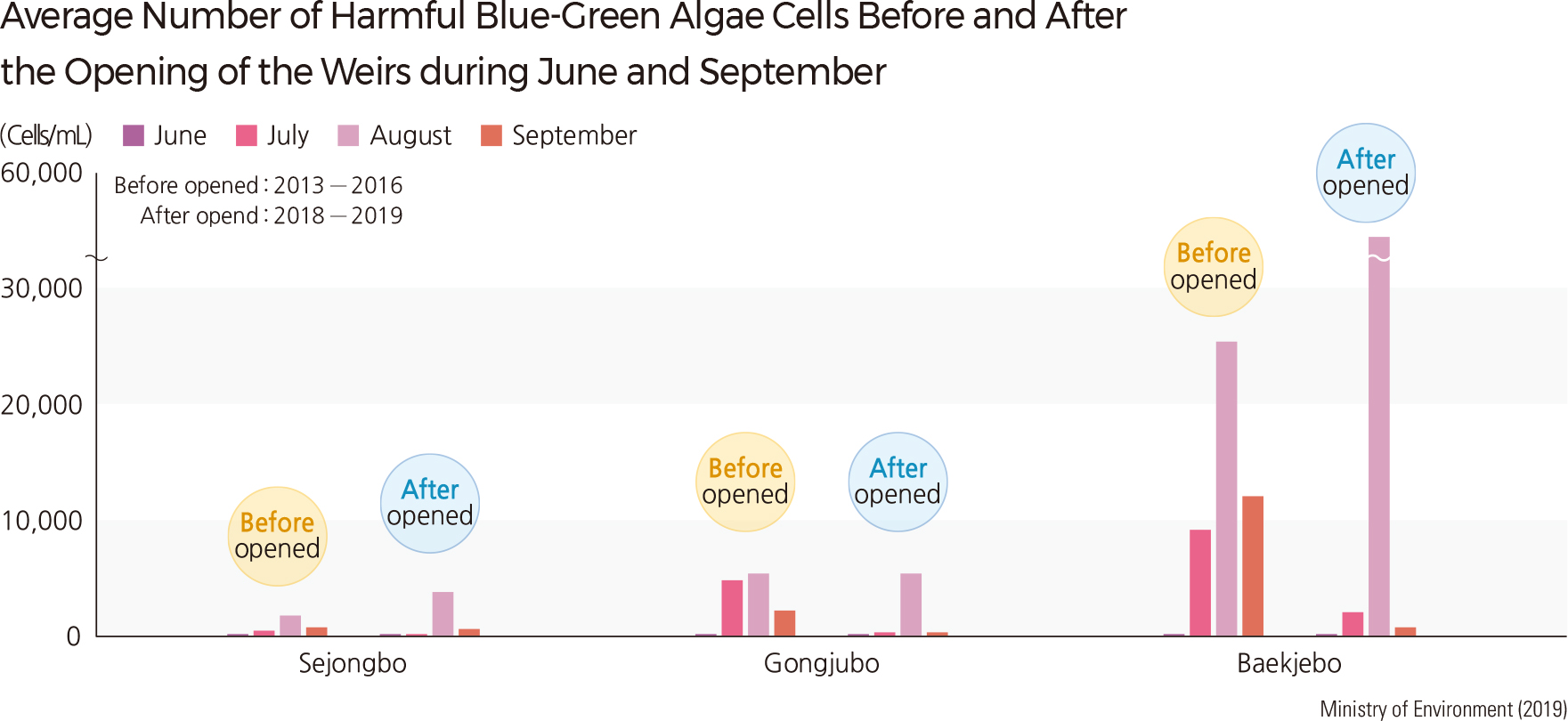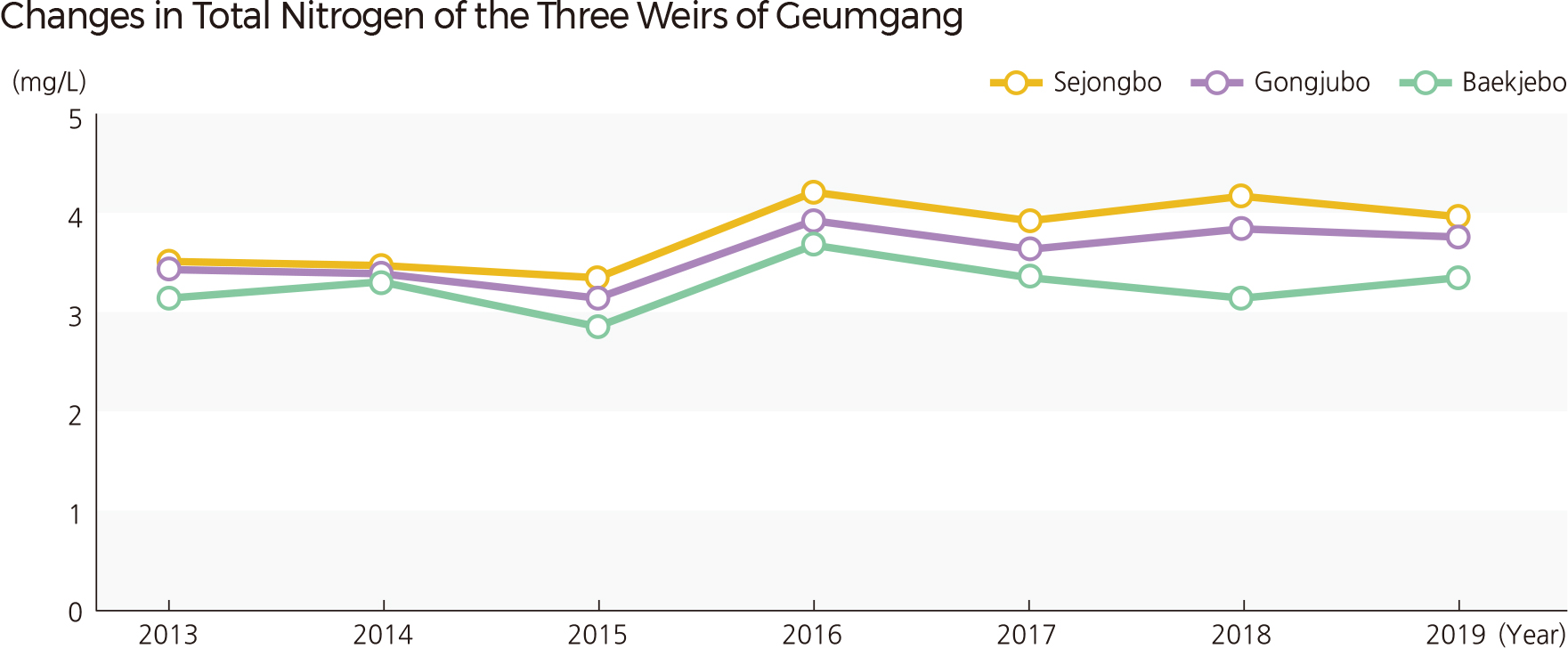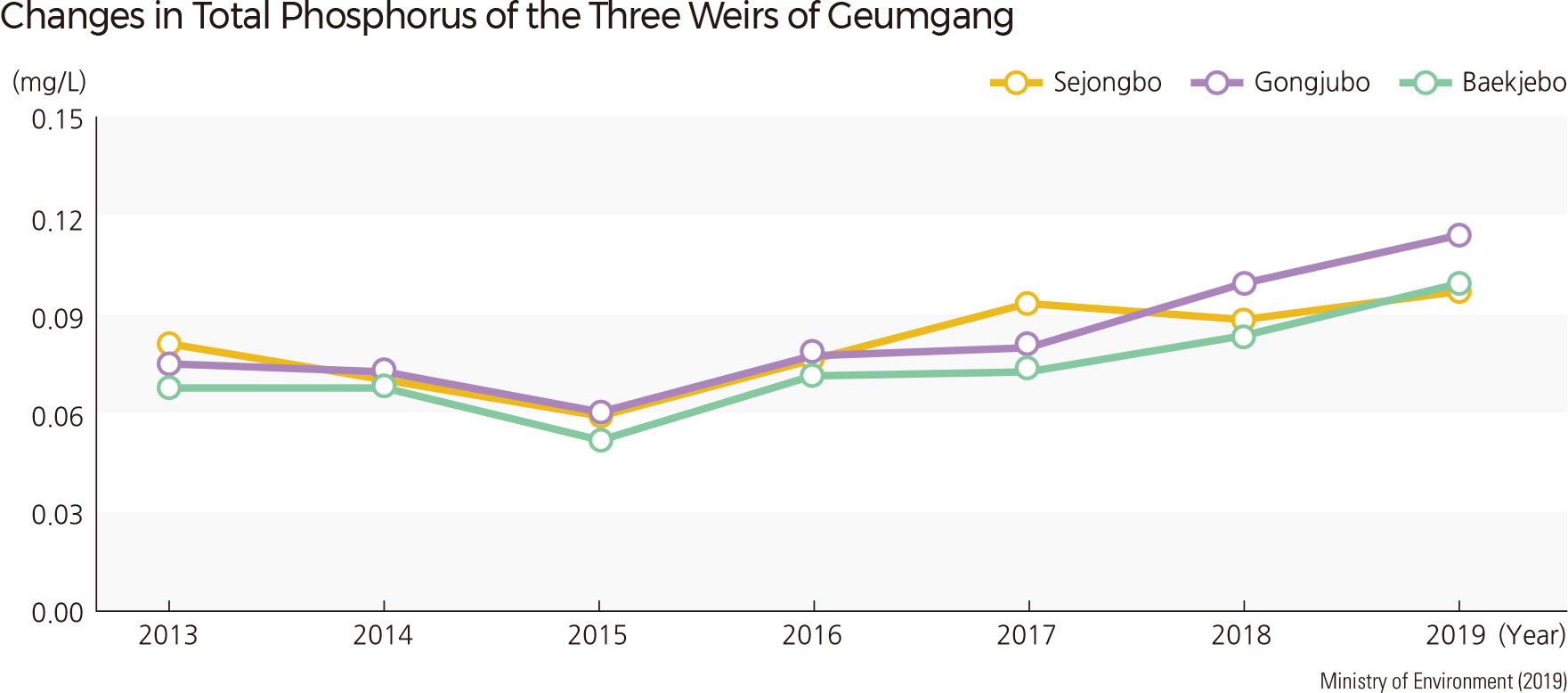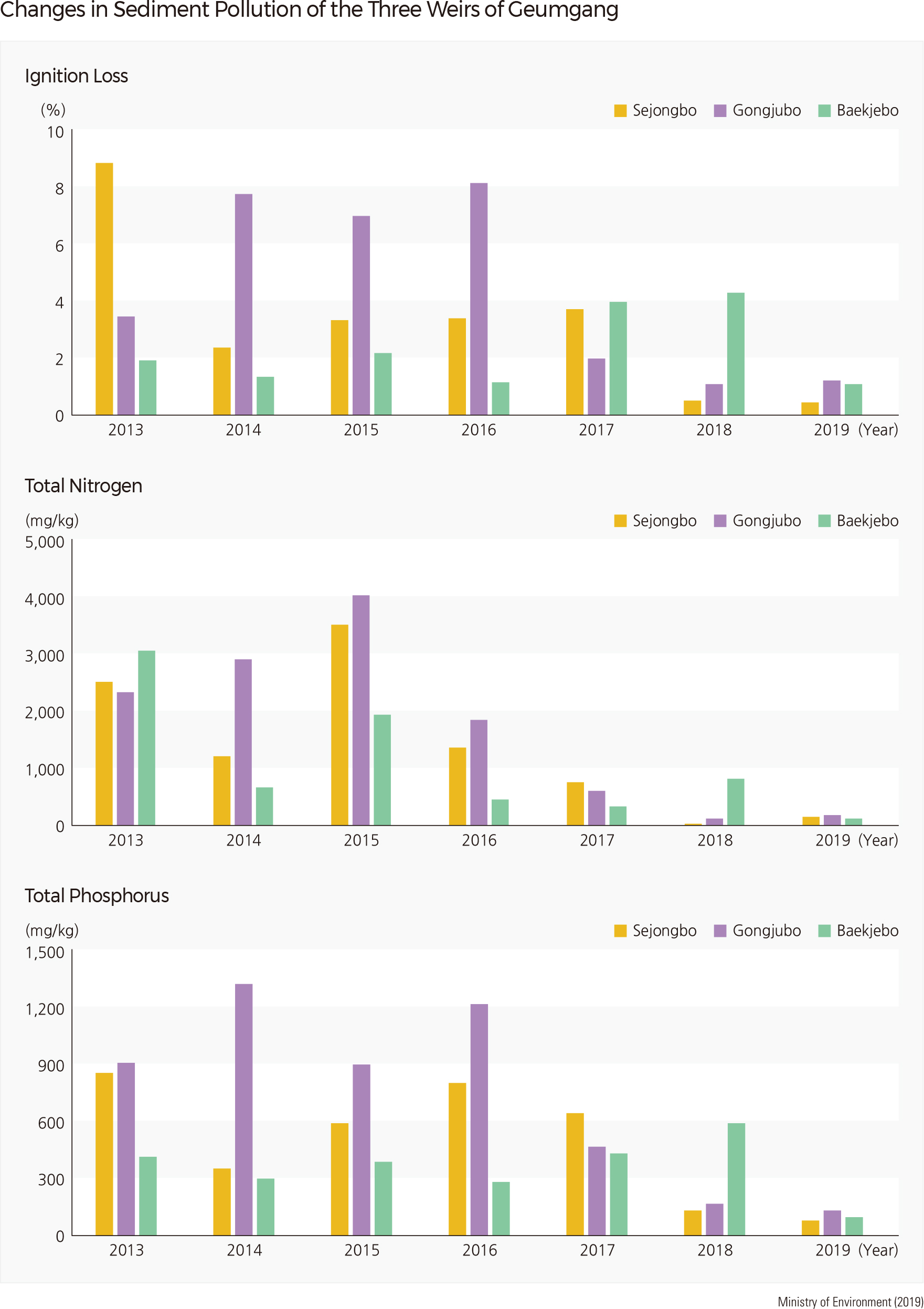English II 2020
A total of 16 weirs were installed on the Hangang, Nakdonggan, Geumgang, and Yeongsangang by the Four Major Rivers Project, which started in 2008 and was completed in 2012. However, the aquatic ecosystem has changed greatly due to the ecological disconnection of the river, and the river bed has changed due to the accumulation of sediments. The riparian landscape has been severely damaged, and environmental problems such as the frequent occurrence of green algae and deteriorating water quality have emerged. In February 2019, the Public-Private Joint Four Major Rivers Survey and Evaluation Planning Committee comprehensively evaluated environmental performance and economic feasibility, as well as water use and water control. The committee proposed treatment plans for the five weirs installed in the Geumgang and the Yeongsangang. Currently, the President-directed State and the Four Major Rivers Water Management Committee are preparing a decision on a treatment plan to restore the nature of the Geumgang and the Youngsangang.
A project monitoring the change in the water environment began through multilateral surveys and analysis in 2011 in the three weirs of Geumgang (Sejongbo, Gongjubo, and Baekjebo). The survey reported the deterioration of the aquatic ecosystems, such as mass mortality of fish (2012), an outbreak of mosquito moss (2014), and discovery of sludge worms and blood worm larvae (2015) after the installation of the weirs. As such environmental problems arose, since 2017 the Survey and Evaluation Planning Committee decided to open weirs to restore the nature of the four major rivers and to monitor changes in rivers due to the opening of the weirs.
The most significant changes due to the opening of the weirs are an increase in the flow rate, a decrease in residence time, and a substantial decrease in algae.
In particular, sludge worms and blood worm larvae in river sediments disappeared, the ratio of sand and gravel increased, and water pollution was significantly improved.
The possibility of natural recovery of the river was confirmed, such as the regeneration of sandbars and rapid growth of vegetation on sediments exposed. Gobiobotia naktongensis, an Endangered Wildlife Class I that has disappeared for the past 10 years due to the Four Major Rivers Project, was discovered downstream of the Sejongbo weir, which was opened first. On the other hand, the water quality index did not improve significantly in the two years following the opening of the weirs. It is believed to be due to external variables such as precipitation and inflow of upstream pollutants. Long-term monitoring is necessary to clearly understand the change in water quality due to the opening of the weirs. |
